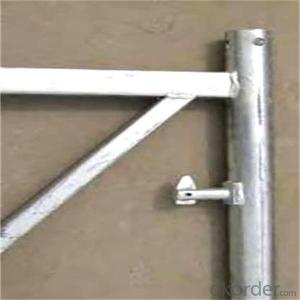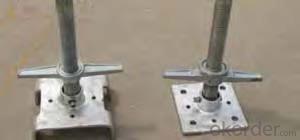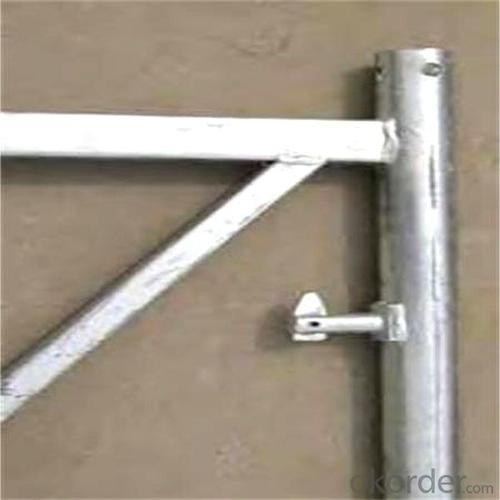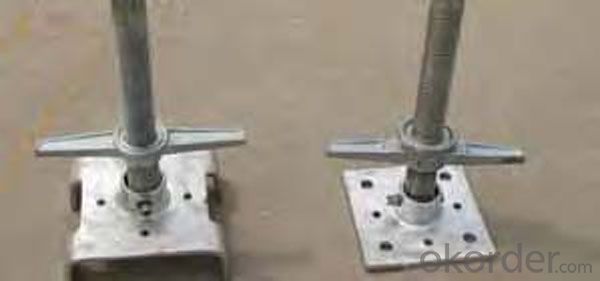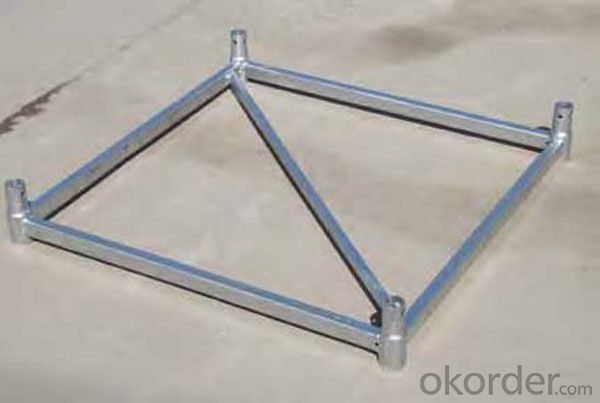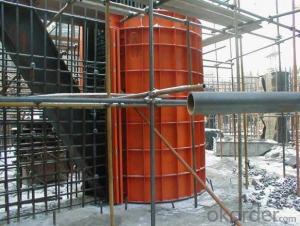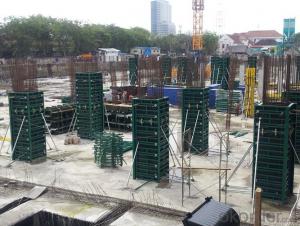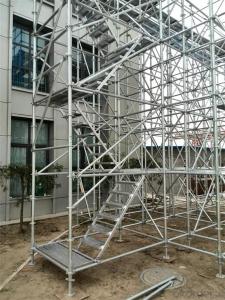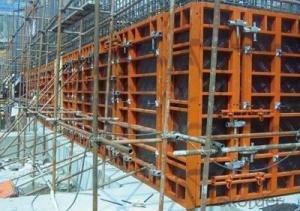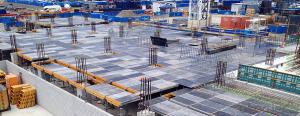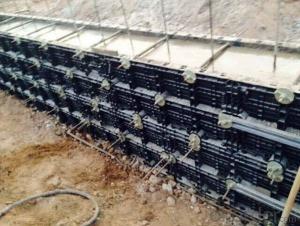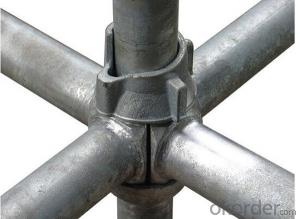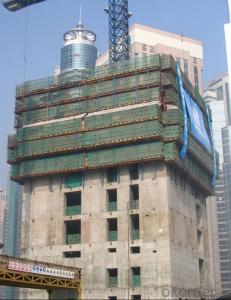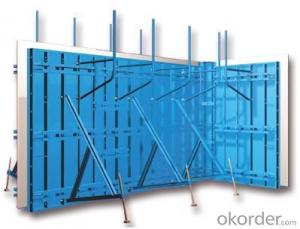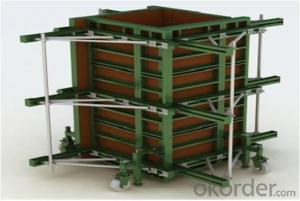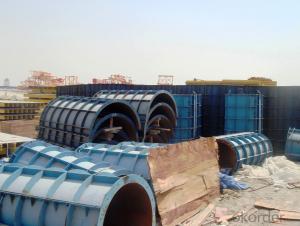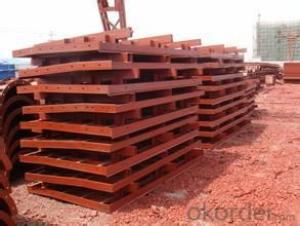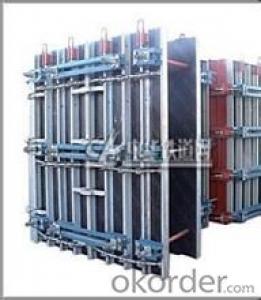Layer Scaffolding Formwork Adjustable Scaffolding Leg with New Design
- Loading Port:
- Tianjin
- Payment Terms:
- TT OR LC
- Min Order Qty:
- 10000 set
- Supply Capability:
- 50000 set/month
OKorder Service Pledge
OKorder Financial Service
You Might Also Like
Layer Scaffolding Formwork Adjustable Scaffolding Leg with New Design
Plastic Formwork Concrete Formwork Scaffolding Manufacturer Scaffolding Spanners with New Design
Developing with new technology materials, steel formworks is no longer a must in construction concrete process. More and more buildings are established with plastic formworks.
The advantages of plastic formworks:
1.First of all--light
Yes it is the first advantage of plastic formwork. It wins the great praise of both contractors and workers.
The biggest panel is 120×1500px,weights 10.5kg only. It can be lift and set up by one person easily, which means there is no need for cranes on site.Saves a lot of cost and time.
2.Easy set up
Different size of panels can firmly locked by simply turn the special handles to 90 degree. The Panels has rib on the back, which makes the system need not traditional wood blocks and nails. The panels have holes to fit tie rod, guarantee the strength of the whole system.
3.Modularity
Modular formworks composed by different size of panels,the main item is 120×1500px panel,which is used for the large area of walls and slabs. There are also small size of panels like 10×1500px,20×1500pxcm,25×1500px,inner corner 20×20×1500px and outer corner 10×5×1500px.Due to the variety of panel size, the system can form almost all size walls 120×1500px panel of multiply by 125px.
4.Strength
The handles are made by high strength Nilon, each panel locked by at least 4 handles, which makes the whole system strong enough to pour 1000px walls.
Layer Scaffolding Formwork Adjustable Scaffolding Leg with New Design
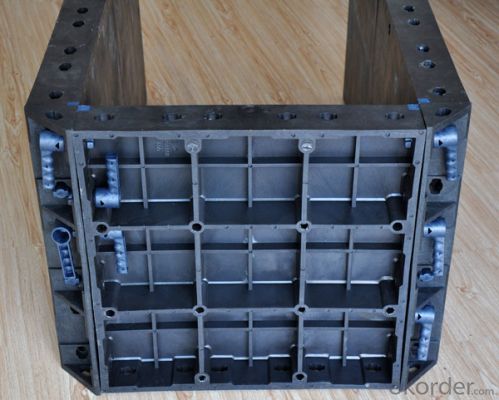
Layer Scaffolding Formwork Adjustable Scaffolding Leg with New Design
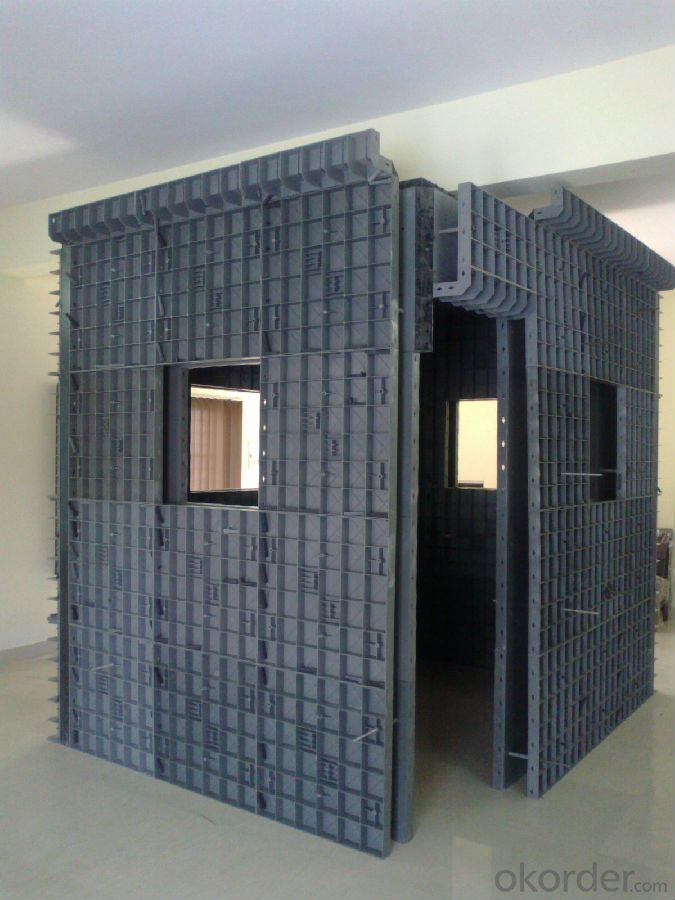
Layer Scaffolding Formwork Adjustable Scaffolding Leg with New Design
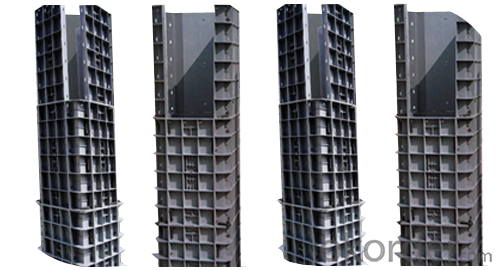
Layer Scaffolding Formwork Adjustable Scaffolding Leg with New Design
- Q: How does steel frame formwork ensure a smooth concrete finish?
- By virtue of its rigidity and stability, steel frame formwork ensures a seamless concrete finish. The design of the steel frames is characterized by strength and sturdiness, guaranteeing a robust structure that can efficiently bear the weight and pressure exerted by the concrete. This effectively prevents any deformation or displacement of the formwork during the pouring and curing process. Furthermore, the steel frames are constructed with utmost precision and accuracy, enabling the creation of straight and level surfaces. This meticulous attention to detail ensures that the concrete is poured evenly and uniformly, resulting in a flawless finish devoid of any irregularities or flaws. In addition, the use of steel frame formwork facilitates the effortless installation and removal of formwork panels. This allows contractors to swiftly and efficiently assemble and dismantle the formwork, minimizing the risk of damaging or disturbing the concrete surface. The seamless removal of the formwork panels also eliminates the possibility of leaving behind any marks or imperfections on the concrete. Overall, the utilization of steel frame formwork presents a dependable and efficient solution for achieving a smooth concrete finish. Its strength, stability, precision, and user-friendly nature collectively contribute to the development of a high-quality surface that meets the desired aesthetic and functional requirements.
- Q: What are the different types of formwork bracing used with steel frame formwork?
- Steel frame formwork can be supported and stabilized by various types of formwork bracing. These bracing systems serve to provide the necessary support and stability during the pouring of concrete. 1. Vertical bracing can be achieved using adjustable steel props. These props are vertical elements composed of a steel tube with a threaded end and a base plate. Their height can be adjusted, and they are secured in place using locking pins. 2. Lateral stability is ensured through the use of horizontal steel bracing. This form of bracing involves steel tubes connected to the vertical props and fastened with clamps or couplers. Regular intervals along the formwork's length are fitted with this bracing. 3. Diagonal bracing provides diagonal support to the formwork. Steel tubes are connected to the vertical props and secured using clamps or couplers. Varying angles are implemented to maximize stability. 4. Additional strength and stability are achieved by employing tie rods. These rods feature threaded ends and connect the formwork panels together. Nuts and washers are used to tighten the tie rods and hold the formwork in place. 5. Cross bracing is utilized to enhance lateral stability. Steel tubes are diagonally connected between the vertical props. Regular intervals are fitted with cross bracing, preventing any formwork shifting or movement. In summary, these various types of formwork bracing used with steel frame formwork are designed to ensure support, stability, and strength throughout the concrete pouring process. These bracing systems are essential in maintaining the formwork's position and withstanding the pressure exerted by the concrete.
- Q: Can steel frame formwork be used for tall structures?
- Yes, steel frame formwork can be used for tall structures. Steel frame formwork is known for its strength and durability, making it suitable for constructing tall buildings. Its rigid structure allows for precise and efficient concrete pouring, ensuring the stability and integrity of the structure. Additionally, steel frame formwork can be easily adjusted and reused, making it a cost-effective solution for tall construction projects.
- Q: Can steel frame formwork be used in projects with limited construction site supervision or management?
- Yes, steel frame formwork can be used in projects with limited construction site supervision or management. Steel frame formwork is a durable and reliable system that provides stability and support for concrete structures. It is designed to be easy to assemble and disassemble, making it suitable for projects with limited supervision or management. Additionally, steel frame formwork offers flexibility and versatility, allowing for adjustments and modifications as needed during construction.
- Q: How does steel frame formwork ensure the stability of the concrete structure during pouring and curing?
- Steel frame formwork ensures the stability of the concrete structure during pouring and curing by providing a rigid and strong framework that holds the concrete in place. The steel frame acts as a support system, preventing any deformation or collapse of the structure while the concrete is being poured and during the curing process. This stability is crucial in ensuring that the concrete sets and hardens properly, resulting in a durable and structurally sound final product.
- Q: Steel frame 5 meters span to the extent of the H beam
- You'd better put the sample in the CAD above, otherwise the steel structure house to collapse or collapse at the top
- Q: Can steel frame formwork be used for both smooth and textured column finishes?
- Yes, steel frame formwork can be used for both smooth and textured column finishes. The formwork can be adjusted and customized to achieve the desired surface finish, whether it is smooth or textured.
- Q: How does steel frame formwork handle concrete pouring in windy conditions?
- Steel frame formwork is designed to withstand windy conditions during concrete pouring. The solid and sturdy structure of steel frame formwork provides stability and strength, which minimizes the impact of strong winds on the concrete pouring process. Steel frame formwork is constructed with durable steel frames that are securely anchored to the ground. This anchoring system ensures that the formwork remains in place even in high winds, preventing any displacement or movement that could compromise the integrity of the concrete structure. Additionally, the steel frame formwork is often reinforced with diagonal bracings or tie rods to further enhance its stability. In windy conditions, the steel frame formwork acts as a barrier, shielding the concrete from direct exposure to the wind. This helps in maintaining the desired consistency and quality of the concrete during pouring. The solid construction of the formwork also prevents any unwanted deformations or distortions caused by wind pressure. To further mitigate the effects of wind, additional precautions can be taken during the concrete pouring process. For instance, pouring concrete in windy conditions can be done in smaller sections to minimize the exposure time and reduce the risk of wind-induced complications. Moreover, using windbreakers or wind barriers around the construction site can provide additional protection from gusts of wind. Overall, steel frame formwork is designed to handle concrete pouring in windy conditions by providing a stable and secure structure that protects the concrete and ensures the successful completion of the construction project.
- Q: Can steel frame formwork be used for both temporary and permanent concrete structures?
- Steel frame formwork is capable of being used for both temporary and permanent concrete structures. It is a flexible and robust system that can endure the pressures and forces exerted during the process of pouring concrete. By providing a stable and secure framework, it guarantees precise dimensions and a top-notch finish. For temporary structures, steel frame formwork can be effortlessly assembled and disassembled, allowing for swift and efficient construction. It is frequently employed in projects such as bridges, tunnels, and temporary structures like staging platforms. Once the concrete has solidified, the formwork can be dismantled and reused for other projects. For permanent structures, steel frame formwork can also be employed. Its strength and durability make it apt for long-term usage, especially in projects where the formwork needs to remain in place to support the structure. Steel formwork can withstand the weight and pressure of the concrete, providing the necessary support until the structure attains its maximum strength. However, it is essential to acknowledge that steel frame formwork may necessitate additional protection or surface treatment for permanent structures to prevent corrosion and ensure long-lasting durability. This can be accomplished through various methods, such as applying protective coatings or utilizing corrosion-resistant materials. In summary, steel frame formwork is a versatile solution that can be utilized for both temporary and permanent concrete structures. Its strength, durability, and ease of use make it a popular choice for construction projects of all sizes.
- Q: How does steel frame formwork contribute to better formwork stability in high wind conditions?
- Steel frame formwork contributes to better formwork stability in high wind conditions due to its inherent strength and rigidity. The steel frame provides a sturdy support system that can withstand strong winds, preventing the formwork from being easily displaced or damaged. This stability ensures that the formwork remains in place during construction, allowing for accurate and precise concrete pouring. Additionally, the steel frame formwork can be securely anchored to the ground or to the building structure, further enhancing its resistance to wind forces. Overall, the use of steel frame formwork greatly reduces the risk of formwork failure or collapse in high wind conditions, ensuring the safety and efficiency of the construction process.
Send your message to us
Layer Scaffolding Formwork Adjustable Scaffolding Leg with New Design
- Loading Port:
- Tianjin
- Payment Terms:
- TT OR LC
- Min Order Qty:
- 10000 set
- Supply Capability:
- 50000 set/month
OKorder Service Pledge
OKorder Financial Service
Similar products
Hot products
Hot Searches
